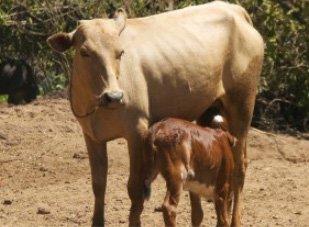Cow Dung

Cow dung refers to the faeces of cow. Everyone knows it but no one wants to talk about it, though worth talking. Dung is a cellulose-rich undigested waste from the cow and is a valuable renewable resource available in plenty. Therefore, it deserves importance.
Traditional Uses of Cow Dung
Cow-dung finds many uses with age-old history. Probably use of cow-dung in Hindu rituals may be the oldest of all its uses. The ash of pure dung prepared through the traditional protocol on the day of Mahashivarathri is considered as one of the holiest material and used as Prasadam to apply on the forehead to get rid of all negative forces. The ash is called “Vibhoothi” or “Bhasma” and is popular among the Shivaites (Disciples of Shiva).
Ayurveda is the next domain of cowdung uses, where it is used as one of the components of medicinal formulations. Panchagavya, one of the pioneer formulations of Ayurveda and the miracle medicine of the contemporary cowpathy represents the most basic and popular preparation containing cowdung. Many other Ayurveda formulations make use of cow dung or its ash as their component. Folk medicines of many other countries of Europe also make use of cow dung in various formulations.
Agriculture is another field where cow dung is used extensively as a fertilizer in raw form or with green manure. Almost all crop plants are grown with cow dung manure in traditional farming practice in India and elsewhere. Traditionally cow dung is used as a domestic fuel in rural households. Fresh dung is made into flat pellets, dried in the sun and stored for use as cooking fuel in olden days in rural India. On drying, the dung losses its foul smell and hence the fuel is acceptable for domestic use.
Cow dung is used as a building material in rural India as well. Cow dung is mixed with mud to form a paste which is used as a plastering material for houses built by clay or bricks. The paste is even used as flooring. It acts as a waterproof material and insulator.
Modern Trends in Cow Dung Use
- Biogas Production : Biogas production from cow dung has few decades of history and one of the popular sustainable technologies implemented in the rural areas of India, Pakistan and few other countries. Cow dung mixed with a right proportion of water is fed into an anaerobic digester for fermentation. Anaerobic bacteria utilize the cow dung as an energy source and grow inside the digester. During their growth, they produce methane and carbon dioxide as the major components. The gas produced in the digester is withdrawn through a tube and stored in cylinders. This can be used for cooking, heating water, and also can be used in motor vehicles. The energy in the biogas can be converted to electricity, in case available in surplus.
- Cow Dung Bricks : This is a new product from cow dung. The cow dung mixed with straw dust to make bricks. These are lighter in weight when compared to normal bricks.
- Fireboard : Possibilities for the use of the slurry of cow dung generated in the biogas digester to replace sawdust in the preparation of fireboard is being explored. The sterilized slurry will be mixed with resin to create a fireboard. Fireboard is extensively used in the furniture industry and floorings.
- Paper : The cellulose fibers present in the cow dung are separated, washed and pressed to create paper. It is being done as a hobby by some people but has the potential to get commercialized.
- Insect Repellent : The burning of dried cow dung is practiced even today in the Middle East for warding away the mosquitoes. Many products of this range are available to a small extent in segmented markets.
Future Scope
Possible use of dung in the remediation of radioactive fallout from the explosion of nuclear bombs, an accidental fallout from nuclear reactors, fission reactions, etc. is under exploration. Some reports about the testing of this unique feature of Cow Dung at the site of the infamous Chernobyl disaster by Yugoslavia through performing the Vedic Agnihotra using cow dung has confirmed a reduction in the intensity of radioactivity in the vicinity of the experiment, providing convincing evidence for the ability of Cow Dung to regulate the radioactive fallout. This may herald a new beginning in the history of Cow Dung.
Help Us Now

Donate to Surabhivana Gaushala to save and protect Indian Cow Breeds.
All donations are exempt under Section 80G of the Income Tax Act, 1961. All donation receipts shall be mailed to the address given by the donor or may be collected in person, at request.
Click the below button to donate through credit cards/debit cards or Net Banking via Razor Pay.
